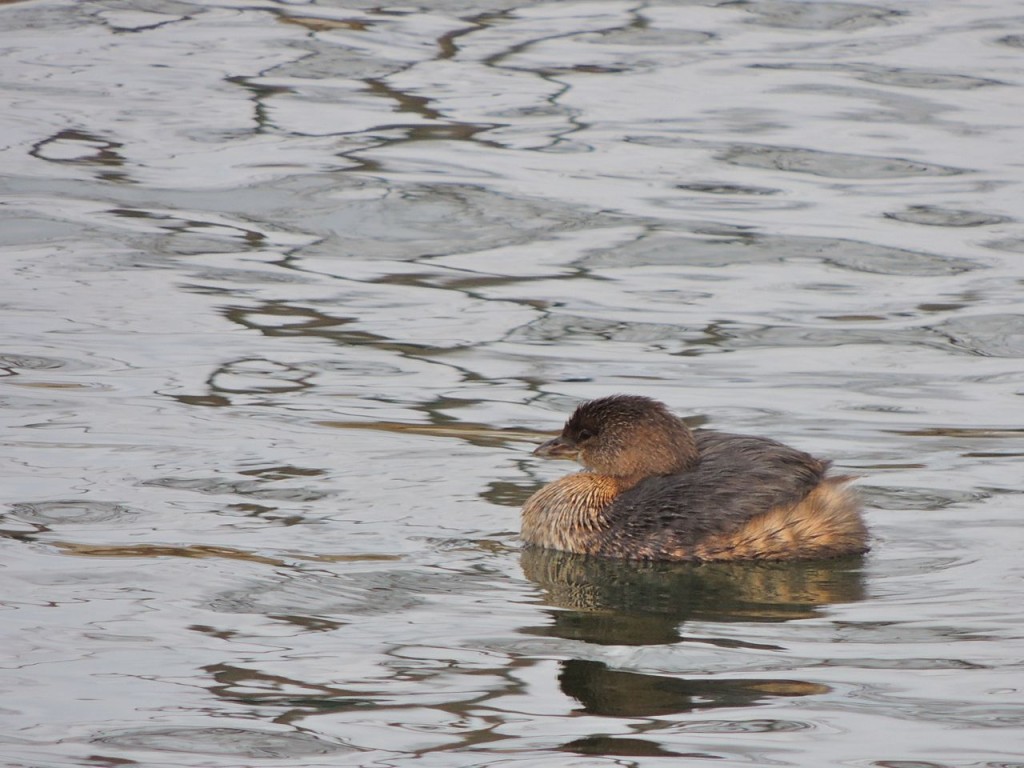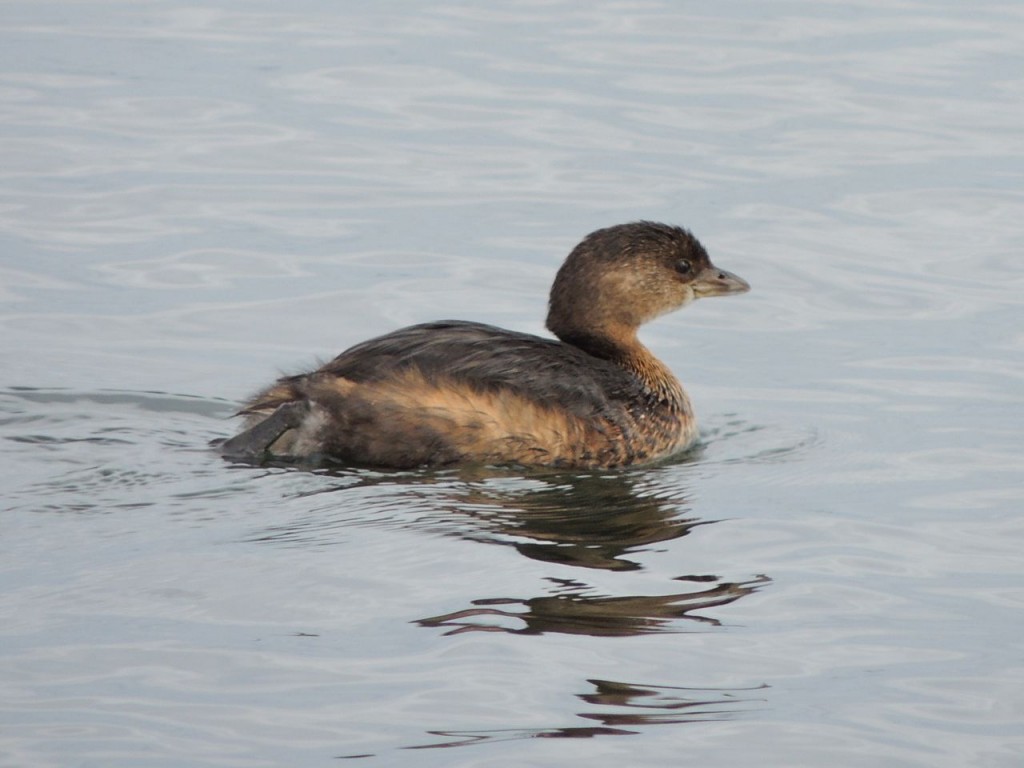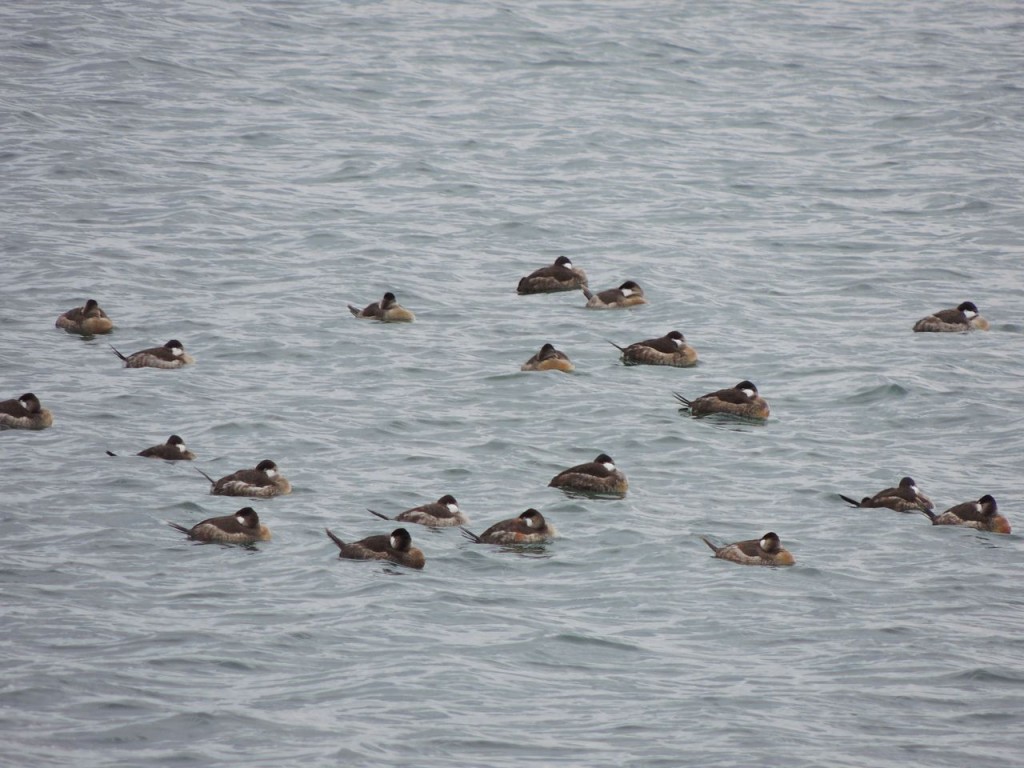28 November 2014. As October wears on and the birding just keeps on going, I invariably make a mental note that this winter I’ll be hardier, I’ll dress for the weather (whatever it may be) and I’ll be out there keeping active and birding. The thought that there will be many fewer birds doesn’t matter, it’ll be fine. Then the first bite of winter arrives and my resolve fades.
Today, after a morning of domestic errands, I faced a choice: Take a long walk sheltered from the icy wind and hope for some interesting lingering migrants, or head home for a hot lunch? I opted for lunch, but a bit of internal nagging directed me to make a few diversions along the lakeshore, just in case. It was hardly vigorous exercise but it turned out to be worthwhile.
My first stop was a marina that attracts lots of waterfowl. The inlets seemed to be choked with Mallards and a scattering of American Coots and Lesser Scaup. Then the anxious retreat of something smaller and rounder caught my eye, so I made my way to a better vantage point; and there I was able to watch and eventually photograph this Pied-billed Grebe.

I was kind of enchanted because Pied-billed Grebes are rather enigmatic birds: they’re grebes, which should mean they have a certain subtle presence about them; but they don’t, they’re more chicken-like. When it comes to breeding season, when that stubby little bill turns whitish with a black band around it, (hence the name) Pied-billed Grebes hold their own; dowdy looking though they may be, they can howl like a banshee from within the obscure corners of cattail marshes. If you didn’t know what you were hearing, the territorial wails of a Pied-billed Grebe would stop you in your tracks. Cool birds.

Nearly home, I parked for a moment to get a better look at rafts of small ducks bobbing just offshore; they turned out to be Ruddy Ducks. I wouldn’t go so far as to say they’re unduck-like, but that little stick-up tail does set them apart, in much the same way Pied-billed Grebes don’t quite fit the mould. Ruddy Ducks are part of a group called Stifftails, a collective name for any of several small, round ducks with short wings and long spiky tail feathers. The Ruddy Duck is the only North American member of the group (ignoring questionable sub-species); there are others (but not many) in South America, Europe and Africa.

At one time, our Ruddy Duck was seen as a valuable and ornamental addition to various wildlife parks in Europe. Once settled in, it began breeding furiously with its European cousin, the White-headed Duck, and in no time hybrids started to dominate the landscape and the pure White-headed Duck was in danger of genetic extinction. Culling the Ruddy Ducks, and presumably any obvious hybrids, and leaving Europe for White-headed Ducks has solved the problem. I recall from my trip to Spain in September that the sight of a White-headed Duck quite excited my tour group leader; they had indeed become nearly extinct. So we get to keep and admire our Ruddy Ducks and there they were today all bobbing around, heads tucked in apparently asleep.
Glad you followed your nagging birding instinct!